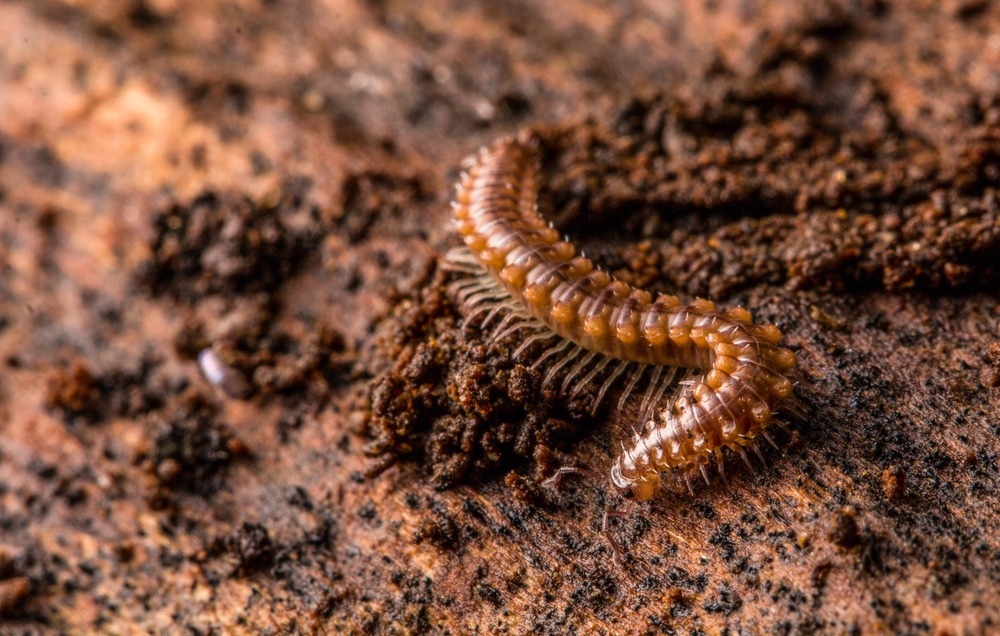Reviewed by Danielle Ellis, B.Sc.Jan 16 2024
People rarely pay much attention to spiders and insects other than when humans swat them away. But as a hard exoskeleton and jointed legs identify arthropods, they are vital to maintaining the ecosystems upon which humans depend. Arthropods comprise an astounding 84% of all known animal species.

Image Credit: Alexwilko/Shutterstock.com
According to a new study published in Scientific Reports, arthropod biodiversity is impacted by human activities, and arthropod biodiversity in metropolitan settings is influenced by nonbiological factors, including daily temperature changes and proximity to the ocean.
In addition to pointing out how homeowners, landscapers, and urban planners can guarantee a healthy mix of these little but important neighbors, the research also revealed a few surprising findings.
Community Science Aids Study
The variety of life forms in any particular location is referred to as biodiversity. In general, an ecosystem that is more diverse tends to be healthier and more resilient. High biodiversity in urban environments has been associated with advantages like enhanced human mental health, less danger of flooding, and better air quality.
Scientists at USC Dornsife College of Letters, Arts, and Sciences worked with researchers at the Natural History Museum of Los Angeles County on the BioSCAN project to evaluate arthropod biodiversity and related characteristics in the Los Angeles basin.
About 80 volunteers helped install tiny, tent-like net structures called Malaise traps in backyards, gardens, and other places across greater Los Angeles as part of the Natural History Museum's BioSCAN community science initiative. Scientists were able to gather flying arthropods like moths, flies, and bees from these traps. In those identical places, they also manually gathered spiders.
Unforeseen Findings in Arthropod Biodiversity
Over the course of the year-long project, the diversity of groups residing in each location was determined by the museum personnel by tallying the arthropods. The outcomes were unexpected.
In general, we thought most arthropods would be similarly affected by environmental factors such as land covered by asphalt or concrete and temperature fluctuations over a 24-hour cycle. Instead, we found an unexpectedly large range of responses to factors such as these, both within closely related groups and across different groups.”
Melissa Guzman, Gabilan Assistant Professor, Biological Sciences and Quantitative and Computational Biology, University of Southern California
For instance, the presence of hard surfaces like asphalt and concrete had differing effects on various insect populations. It appeared to reduce the diversity of the crane flies in the Tipuloidea superfamily while it boosted the diversity of fruit flies in the Drosophilidae family.
It is noteworthy to note that there was a great diversity of spiders near hard-covered ground. Additionally, the researchers discovered that temperature seems to affect the variety of fungus gnats in the Mycetophilidae family, which includes hoverflies that resemble bees, as well as the Syrphidae family. As the mercury increased, the diversity of these insects reduced.
The warmer midsummer temperatures, which many hoverflies eat, may cause plants that aphids eat to dry up, according to the researchers' theory. Additionally, non-native honeybees compete for the same resources since they forage more in warmer climates.
Urban planners and developers can modify their projects in ways that increase biodiversity and benefit all Angelenos by understanding the relationship between species diversity and variables like temperature, land value, and land cover.
Many New Species Discovered
Another unexpected finding that thrilled the researchers was that the investigation revealed a large number of arthropod species that scientists were unaware existed in the Los Angeles region, including nearly 50 species that had never been identified before, according to Brian Brown, curator of entomology at the Natural History Museum.
Based on that, we have a new understanding of what the biodiversity of Los Angeles is like in terms of insects, so instead of the 3,500 or 4,000 species that we previously thought, now we are thinking there are close to 20,000 species living here in the ‘city of insects.’”
Brian Brown, University of Southern California
The researchers credit the L.A. community members who took part in the BioSCAN project with being essential to comprehending the region's biodiversity and, consequently, to conservation efforts. They honored each newly discovered species by naming it after a participant family.
Findings Have Lessons for Humans
The study has limitations; for example, it does not take into consideration seasonal differences in temperature and rainfall. Nevertheless, the researchers believe that the results indicate methods that Angelenos might use to make sure that the diversification of arthropods is increased.
Prioritizing green areas and reducing the use of pesticides would go a long way. And urban planners and builders could include microhabitats designed to allow a greater variety of species to thrive.”
Melissa Guzman, Gabilan Assistant Professor, Biological Sciences and Quantitative and Computational Biology, University of Southern California Dornsife
Although the study was focused on the Los Angeles area, the researchers think the findings would apply to other similar regions and provide guidance to homeowners and land developers in numerous western North American towns.
Source:
Journal reference:
Lewthwaite, J. M. M., et.al., (2024). Drivers of arthropod biodiversity in an urban ecosystem. Scientific Reports. doi.org/10.1038/s41598-023-50675-3